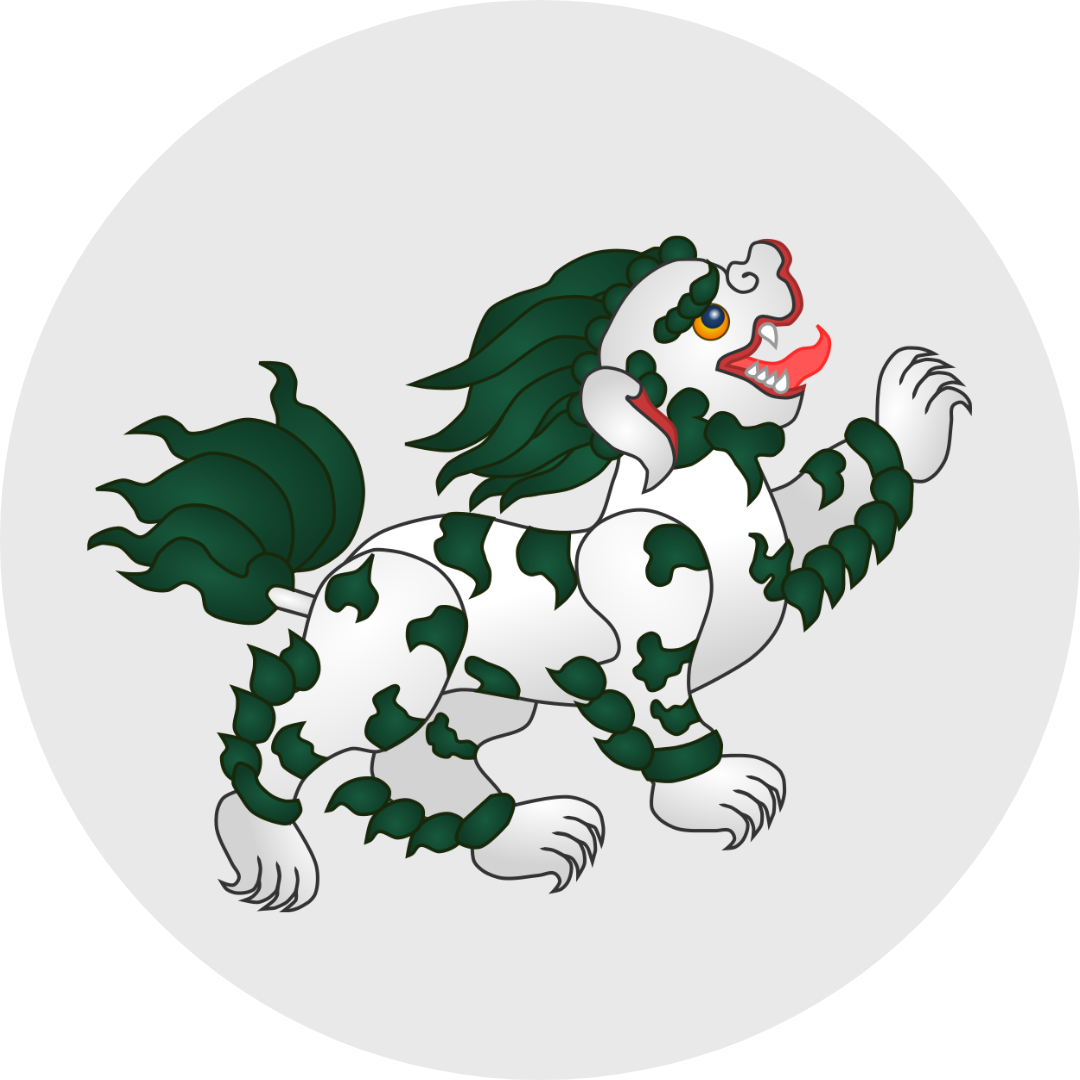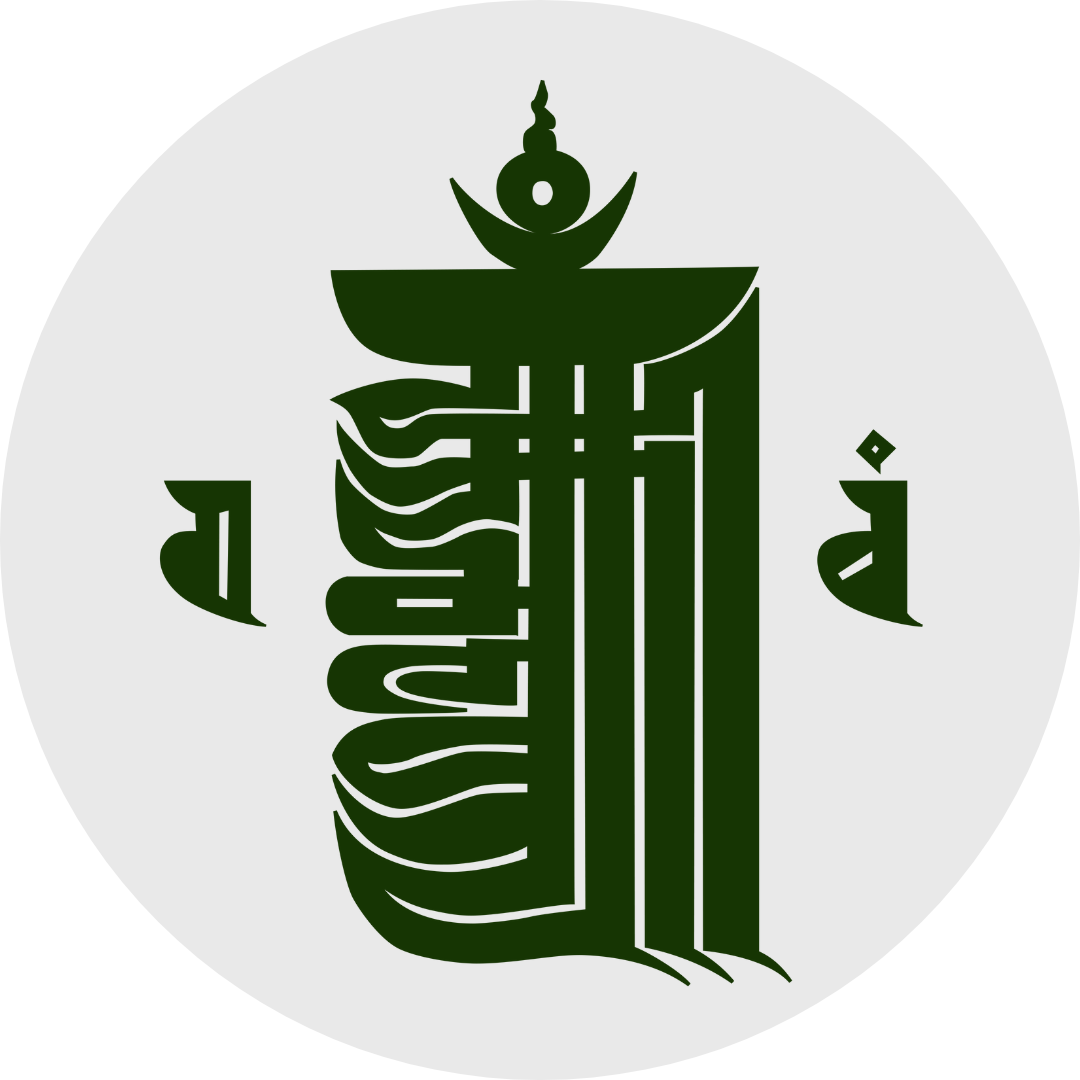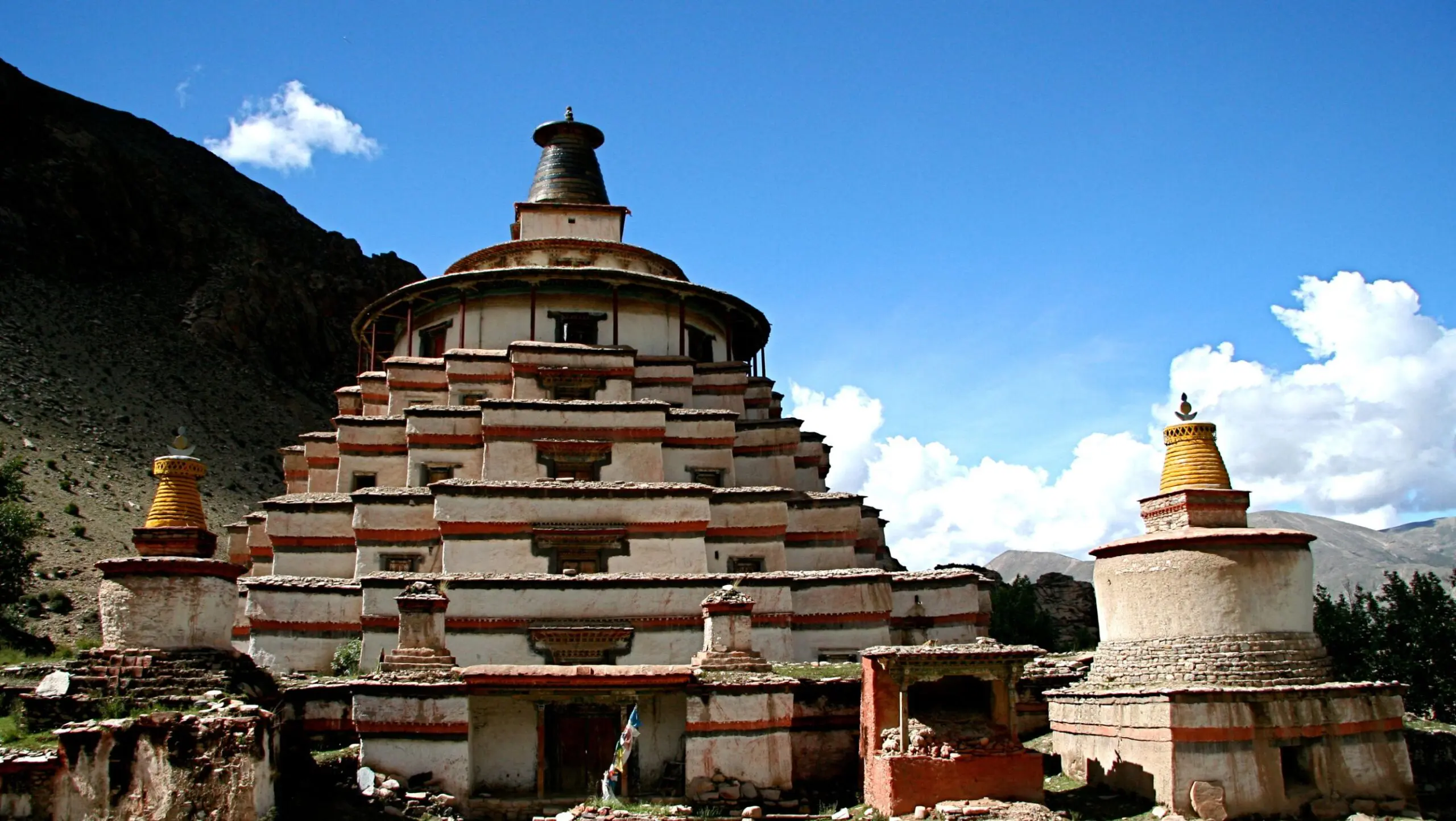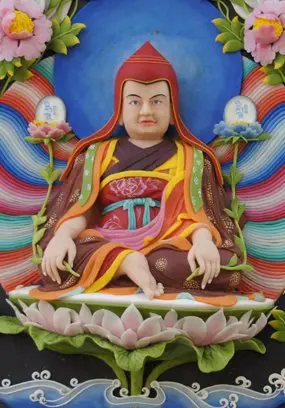Truyền Thừa Của Chúng Tôi
Mặc dù chúng tôi thực hành các pháp từ nhiều truyền thừa khác nhau, nhưng pháp tu Thời Luân (Kalachakra) của chúng tôi dựa trên Dzokden Dharma và truyền thừa Jonang.Truyền Thống Jonang Quan Trọng Đối Với Thế Giới Của Chúng Ta
Mặc dù rất ít người ngoài giới học thuật từng nghe về Jonang, nhưng đây không phải là một truyền thống mới. Jonang bắt nguồn từ Ấn Độ và trường Đại học Nalanda danh tiếng. Mãi đến thế kỷ 13, khi người sáng lập Kunpang Thukje Tsondru định cư tại thung lũng Jomonang ở Tây Tạng, truyền thống này mới được biết đến với tên gọi Jonang.
Một trong những lý do khiến ít người hiện nay biết đến Jonang là vì họ không rời Tây Tạng vào năm 1959. Khi Chính quyền Tây Tạng lưu vong bắt đầu đăng ký các truyền thống, Jonang đã vắng mặt. Do đó, rất ít người nước ngoài được tiếp cận với những giáo lý chính thống của họ.
Mãi đến năm 1990, những tu sĩ Jonang đầu tiên mới bắt đầu xuất hiện từ Tây Tạng. Kể từ đó, họ đã yêu cầu Chính quyền Tây Tạng công nhận truyền thống của họ vì họ xứng đáng được tôn trọng như các truyền thống Nyingma, Kagyu, Sakya, Gelug và Bön. Mặc dù đã đạt được những tiến bộ lớn trong việc này, nhưng tiếc là công việc này vẫn chưa được hoàn tất.
Chính vì Jonang là những người giữ gìn cốt lõi của hai dòng truyền thừa quan trọng này mà việc truyền bá Giáo Pháp Jonang trở nên vô cùng quan trọng. Nếu không làm vậy, chúng ta sẽ đánh mất những hệ thống tinh thần không thể thay thế này.

Zhentong
Triết lý Trung Quán Tha Tánh Không (Zhentong Madhyamaka) được nhiều bậc thầy giác ngộ nhất của Tây Tạng công nhận là quan điểm cao nhất. Dòng phái Jonang là dòng phái duy nhất trong năm trường phái Phật giáo Tây Tạng lớn nhấn mạnh giáo lý độc đáo này và bảo tồn truyền thừa của nó.

Kalachakra
Mật Điển Thời Luân (Kalachakra Tantra) là hệ thống toàn diện và hiệu quả nhất trong Phật giáo Tây Tạng. Dòng phái Jonang là truyền thống duy nhất bảo tồn toàn bộ hệ thống Thời Luân, bao gồm cả thực hành hoàn thiện độc đáo được gọi là “Sáu Pháp Du-già Kim Cang” (Six Vajra Yogas).
#RECOGNIZEJONANG
Equal Rights for the Jonang Tradition
Raise awareness of the Jonang Tradition
Truyền thừa Kinh điển của Zhentong Madhyamaka (Trung Quán Tha Tánh Không)
Quan điểm Zhentong tuyệt đối được Đức Phật Thích Ca Mâu Ni lần đầu giảng dạy trong lần chuyển pháp luân thứ hai và thứ ba. Những giáo lý này chỉ được truyền lại cho những người có tâm đã chín muồi và đủ khả năng tiếp nhận những chân lý sâu xa này. Dựa trên các giáo lý này, Bồ Tát Di Lặc, vị đại diện và thừa kế của Đức Phật Thích Ca Mâu Ni, đã truyền dạy năm bộ luận vĩ đại nhằm làm sáng tỏ ý nghĩa tối hậu và thực hành của giáo pháp Đại thừa:
- Hiện Quán Trang Nghiêm Luận (Skt. Abhisamayalankara)
- Đại Thừa Trang Nghiêm Kinh Luận (Skt. Mahayanasutralankara)
- Biện Trung Biên Luận (Skt. Madhyantavibhaga)
- Biện Pháp Tánh Luận (Skt. Dharma-dharmata-vibhaga)
- Phật Tính Luận (Skt. Uttaratantra Shastra)
Những bộ luận này được truyền cho Asanga (Ngài Vô Trước), một vị tăng sĩ đã chứng kiến sự xuất hiện của Bồ Tát Di Lặc trong một linh kiến sau 12 năm thiền định trong hang động. Dòng truyền thừa này sau đó được duy trì và phát triển bởi các bậc thầy vĩ đại của Ấn Độ như Vasubandhu (Thế Thân), Saraha, Gangamaitri, và nhiều bậc thầy khác. Vào thế kỷ 11, dòng truyền thừa này được mang đến Tây Tạng thông qua các dịch giả vĩ đại như Zi Lotsawa Gawé Dorje, Tsen Khawoche Drimé Sherab, từ đó, giáo lý được truyền trong một dòng truyền thừa không gián đoạn cho đến Đại sư Toàn tri Dolpopa Sherab Gyaltsen vào thế kỷ 14.
CÁC BẬC THẦY TRUYỀN THỪA
Nguồn Gốc
1. Pháp Thân Tự Tánh Nguyên Thủy (Svabhavikakaya)
2. Vajradhara (Pháp Thân – Dharmakaya)
3. Vajrasattva (Báo Thân – Sambhogakaya)
4. Phật Thích Ca Mâu Ni (Thân Hoá Hiện – Nirmanakaya)
5. Di Lặc Bồ Tát (Maitreya)
Yogacara Madhyamaka của Asanga
6. Ngài Vô Trước (Arya Asanga)
7. Ngài Thế Thân (Vasubandhu)
8. Dignaga
9. Sthiramati
10. Chandragomin
Truyền Thống Thiền Quán của Di Lặc Bồ Tát (Maitreya)
11. Maitripa
12. Ratnakarashanti
13. Anandakirti
14. Sañjana
15. Lotsawa Gawa’i Dorje
16. Tsen Kawoche Drimé Sherab
17. Dharma Tsondru
18. Yeshe Jungné
19. Jangchup Kyap
20. Zhonnu Jangchup
Truyền Thừa Dòng Narthang
21. Monlam Tsultrim
22. Chomden Rigpé Raldri
23. Kyiton Jamyang Drakpa
Truyền Thừa Dòng Jonang Tha Tánh Không (Zhentong)
24. Đại sư Toàn tri Dolpopa Sherab Gyaltsen
25. Chögyal Choklé Namgyal
26. Tsungmed Nyabön Kunga
27. Chöjé Pal Gonpo
28. Lodrö Gyatso
29. Donyöd Pal
30. Panchen Shakya Chokden
31. Donyon Drubpa
32. Jamgön Drubpa Pawo
33. Kunga Gyaltsen
34. Drakden Drubpa
35. Jetsun Taranatha
36. Ngonjang Rinchen Gyatso
Truyền Thừa Dòng Dzamthang Tsangwa
37. Khidrup Lodrö Namgyal
38. Drupchen Ngawang Trinlé
39. Ngawang Tenzin Namgyal
40. Ngawang Khetsun Dargé
41. Kunzang Trinlé Namgyal
42. Nuden Lhundrub Gyatso
43. Konchok Jigmé Namgyal
44. Ngawang Chöphel Gyatso
45. Ngawang Chökyi Phakpa
46. Ngawang Chöjor Gyatso
47. Ngawang Chözin Gyatso
Truyền Thừa Dòng Jonang Chamda
48. Kunga Khedrub Wangchuk
49. Rinchen Zangpo
50. Rinchen Öser
51. Ngawang Lodrö Drakpa
52. Kunga Sherab Saljé
53. Khentrul Jamphel Lodrö

Dòng Truyền Thừa Mật Tông của Kalachakra Vajra Yoga
Người ta nói rằng Đức Phật lần đầu tiên giảng dạy những giáo lý mật tông Kalachakra này tại Drepung ở miền Nam Ấn Độ (Amaravati). Người thụ nhận chính của các giáo lý này là Vua Suchandra của Shambhala. Vua Suchandra đã chép lại các giáo lý mật tông Kalachakra và soạn thảo các luận giải. Dòng truyền này được duy trì bởi 7 vị Vua Dharma và 11 vị Vua Kalki trước khi đến vùng đất Ấn Độ.
Trước thế kỷ 10, các giáo lý Mật tông Kalachakra chưa được phổ biến ở Ấn Độ. Tuy nhiên, đại thành tựu giả người Ấn Độ Manjuvajra được cho là đã đạt được thần thông và du hành đến Shambhala. Sau khi trở về, Ngài đã truyền lại dòng Mật tông Kalachakra này cho đệ tử của mình là Shribhadra.
Đệ tử của Shribhadra, đại học giả Pandita Dawa Gonpo, đã dành phần lớn cuộc đời của mình ở Tây Tạng, cùng làm việc với Dro Lotsawa để dịch toàn bộ giáo lý Kalachakra. Dòng truyền này sau đó được gìn giữ qua nhiều bậc thầy Tây Tạng như Lama Lhaje Gompa, Lama Droton Namsek và đại sư Yumo Mikyo Dorje, người đã truyền bá rộng rãi những giáo lý này.
Vào thế kỷ 13, Kunpang Thukje Tsondru đã thọ nhận hơn 17 dòng truyền Kalachakra khác nhau từ nhiều bậc thầy và dành nhiều năm ẩn tu để thực hành Sáu Yoga Kim Cang tại một nơi gọi là Jomonang. Sau này, nơi này trở thành địa điểm của tu viện Jonang chính, còn được biết đến như Shambhala thứ hai. Thukje Tsondru đã kết hợp các dòng truyền này thành một dòng thực hành độc nhất vô song, trở thành nền tảng cốt lõi của chương trình giáo lý Jonang cho đến ngày nay.
CÁC BẬC THẦY TRUYỀN THỪA
Nguồn Gốc
1. Pháp Thân Tự Tánh Nguyên Thủy (Svabhavikakaya)
2. Vajradhara (Pháp Thân – Dharmakaya)
3. Kalachakra (Báo Thân – Sambhogakaya)
Các Vị Pháp Vương của Shambhala
4. Suchandra
5. Sureshvara
6. Taji
7. Somadatta
8. Sureshvara
9. Vishvamurti
10. Sureshana
11. [Manjushri] Yashas
12. Pundarika
13. Badra
14. Vijaya
15. Sumitra
16. Raktapani
17. Vishnugupta
18. Arkakirti
19. Subhadra
20. Samudravijaya
21. Aja
Truyền Thống Nalanda của Kalachakra
22. Manjuvajra
23. Shri Badra
24. Bodhibadra
25. Somanatha
Dòng Truyền Thừa Dro của Sáu Yoga Kim Cang
26. Drotön Lotsawa
27. Lama Lhaje Gompa
28. Lama Drotön Namseg
29. Lama Drupchen Yumo
30. Tséchok Dharmeshvara
31. Khipa Namkha’i Öser
32. Machig Tulku Jobum
33. Lama Druptop Sechen
34. Chöje Jamyang Sarma
35. Kunkhyen Chöku Öser
Truyền Thừa Dòng Jonang Kalachakra
36. Kunpang Thukje Tsondru
37. Jangsem Gyalwa Yeshe
38. Khetsun Yonten Gyatso
39. Kunkhyen Dolpopa Sherab Gyaltsen
40. Chögyal Choklé Namgyal
41. Tsungmed Nyabön Kunga
42. Drupchen Kunga Lodrö
43. Jamyang Konchog Zangpo
44. Drenchok Namkha Tsenchen
45. Panchen Namkha Palzang
46. Lochen Ratnabhadra
47. Palden Kunga Drolchok
48. Kenchen Lungrik Gyatso
49. Jetsun Taranatha
50. Ngonjang Rinchen Gyatso
Truyền Thừa Dòng Dzamthang Tsangwa
51. Khidrup Lodrö Namgyal
52. Drupchen Ngawang Trinlé
53. Ngawang Tenzin Namgyal
54. Ngawang Khetsun Dargé
55. Kunzang Trinlé Namgyal
56. Nuden Lhundrub Gyatso
57. Konchok Jigmé Namgyal
58. Ngawang Chöphel Gyatso
59. Ngawang Chökyi Phakpa
60. Ngawang Chöjor Gyatso
61. Ngawang Chözin Gyatso
Truyền Thừa Dòng Tashi Chöthang
62. Ngawang Tenpa Rabgye
63. Ngawang Lobsang Trinlé
64. Khentrul Jamphel Lodrö
CỘNG ĐỒNG TU VIỆN JONANG
Đại sư Toàn tri Dolpopa Sherab Gyaltsen là một bậc thầy vô cùng có ảnh hưởng. Trong số những thành tựu lớn của ông, ông đã phát triển một hệ thống thực hành thống nhất kết hợp Quan Điểm Zhentong từ Kinh điển với Thực hành Mật điển Kalachakra. Qua hệ thống này, các hành giả sẽ phát triển cái nhìn của mình bằng cách thiền quán về ý nghĩa của “Năm Bộ Luận” của Di Lặc Bồ Tát (Maitreya). Sau đó, họ sẽ áp dụng những chứng ngộ trực tiếp của mình vào việc thực hành Kalachakra. Sau này, Kunga Drolchok và Taranatha đã mở rộng hệ thống này bằng cách làm rõ thêm nhiều giáo lý tuyệt vời của Đại sư Toàn tri Dolpopa.
Trong khi các bậc thầy Jonang thời kỳ đầu hoạt động rất tích cực trong lĩnh vực học thuật, do những trở ngại chính trị nảy sinh vào thế kỷ 17, phần lớn các hành giả Jonang bắt đầu tập trung ngày càng nhiều vào việc thực hành tâm linh của mình. Do đó, Truyền thống Jonang đã phát triển với một chiều sâu chứng ngộ to lớn, cho phép truyền thống này cung cấp sự hiểu biết toàn diện nhất về hệ thống Kalachakra.
Hiện nay, hơn bảy mươi tu viện và trung tâm ẩn tu tại Tây Tạng, đặc biệt ở các vùng Kham và Amdo, Truyền thống Jonang vẫn tiếp tục phát triển mạnh mẽ. Riêng tại tu viện Dzamthang, có hơn 5000 tăng sĩ đang học tập Trung Quán Tha Tánh Không (Zhentong Madhyamaka) cũng như năm môn học chính của triết học Phật giáo, dựa trên các bộ luận của Đại sư Toàn tri Dolpopa và các bậc thầy Jonang đáng kính khác. Khóa nhập thất ba năm về Kalachakra đã trở thành một phần truyền thống trong chương trình đào tạo của các tu viện Jonang. Hiện nay, có rất nhiều hành giả đang tham gia các khóa nhập thất trọn đời, thực hành Sáu Yoga Kim Cang.
Nhờ vào lòng bi mẫn của các bậc thầy như Khentrul Rinpoché, thế giới hiện đại đang dần tiếp cận được trí tuệ cổ xưa của truyền thống sâu sắc này.

CÁC TU VIỆN LIÊN KẾT VỚI KHENTRUL RINPOCHE
Trong suốt cuộc đời mình, Khentrul Rinpoché đã có vinh dự được học tập tại hơn 11 tu viện thuộc các truyền thống chính của Phật giáo Tây Tạng. Trong số đó, Ngài có mối liên kết đặc biệt sâu sắc với bốn tu viện Jonang nổi bật ở vùng Golok/Amdo, miền Đông Tây Tạng. Các tu viện này là nguồn cội chính của truyền thống Kalachakra mà Rinpoché đang gìn giữ và hoằng dương ở phương Tây:
Tu viện Dzamthang Tsangwa
Tu viện Tashi Chöthang
Tu viện Jonang Chamda
Tu viện Longkya Mingyur Dechen Ling